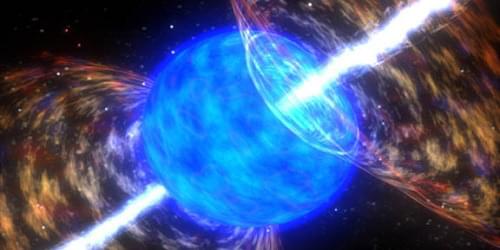Despite its intensity, the gravitational collapse of certain massive stars does not produce an abundance of heavy elements.
About half of the elements heavier than iron are made by the r, or rapid, process. A nucleus captures neutrons so quickly that radioactive decay is forestalled until the neutron-heavy nucleus finally emits electrons and neutrinos and settles at a new, higher atomic number. Besides normal supernovae and neutron-star mergers, the r process is also suspected to occur in so-called collapsars. These are rapidly rotating massive stars that collapse without producing a regular supernova once they exhaust their fuel. However, simulations by Coleman Dean and Rodrigo Fernández of the University of Alberta, Canada, have now undermined that r-process conjecture [1].
A collapsar’s progenitor is massive enough that it forms a black hole. To shed its prodigious angular momentum, it also forms a thick, unstable accretion disk. During the collapse, nuclei in the stellar envelope break apart, and their protons combine with electrons in the envelope to produce neutrons and neutrinos in large numbers. These neutrons could turn the disk into a favorable, if fleeting, site for the r process to forge and disperse heavy elements—provided that this neutron-rich matter can be ejected.
